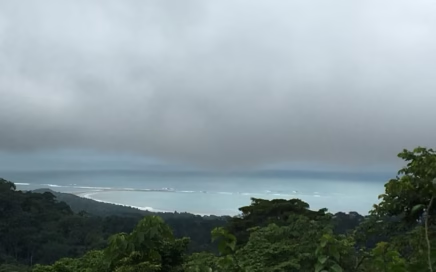
The Poisonous Granular Frog
AUTHOR: Josue Alberto Vargas Montoya (14 years of age)
The spectacular family of poisonous frogs (Dendrobatidae) surprises with its beautiful and colorful and lethal frogs. In Costa Rica, we have eight species of poisonous frogs. Those of the genus "Silverstoneia" and "Allobates" are not harmful.
The genus "Oophaga" is famous for its "pants," and the only two species of Oophaga of Costa Rica (O. Pumilio and O. Granulifera) are those that present pants.
The Granular Poisonous Frog (Oophaga Granulifera) is endemic to the Central Pacific and southern Costa Rica and part of Panama. It can be located near gorges in the woods.
In Costa Ballena, you can find the Red morpho with its green pants and his back "Granular," hence its name.
After Hacienda Barú towards the Central Pacific, its main red color changes to Orange for the Matapalo sector, yellow in Portalón, and finally an olive green in San Rafael, Quepos always with its green and sometimes light blue pants.
These frogs are in danger due to the loss of their habitat. It is also exploited by smugglers to sell them as Terrarium pets.
Its venom is neurotoxic and very dangerous. It is not recommended to manipulate animals in freedom, especially the beautiful multicolored frogs.
The dangerous thing would be for the poison to reach a wound, or you would suck it.
Indigenous peoples used the poison of these frogs for hunting, smearing the poison on their arrows. That is why some of them are called "arrowhead frogs or dart frogs" in general (phyllobates).
Granular poisonous frogs are well distributed in Costa Ballena. It is a great attraction for tourists and so of interest for tour guides. Costa Ballena is one of the main places to see the Red Morpho, one of the granular venomous frogs.
They are diurnal, and males are heard singing to attract females to reproduce. The female lays her eggs in leaf ponds in the forest. As the hours pass, the eggs become tadpoles waiting for their father to place them in a bromeliad where they will be safe.
The mother feeds them with infertile eggs until they grow and can find food on their own.

So, I became Costa Rica’s lover
Eventually, I became Costa Rica’s lover. Though she has had many others,
Three very young ambassadors from Costa Ballena!
By Dagmar Reinhard Three very young ambassadors from Costa Ballena participated at the “NATIONAL SURF CIRCUIT 2014” in Nosara. Emily Anderson (10 years old) won the 2nd place in the Caribbean Classic groms division. She […]
New Lifeguard Tower at Playa Hermosa
By Dagmar Reinhard It was per initiative of Don Brian Nice, the source of many community-projects in Costa Ballena, that the new lifeguard tower in Playa Hermosa was built and recently inaugurated. Currently, it is […]
Surfers´ Paradise – the best beaches in Costa Ballena
By Leonie Ruhland In addition to the opening of the annual national competition (Circuito National de Surf), clearly every surfer is eager to hit the greatest waves on Costa Rica’s beaches. With the 4th Tournament […]
La Casa del Artista
By Dagmar Reinhard For him, to be mentioned is not important. He wants his work to be in the spotlight because it has a significant message, which has been carried from Costa Rica to every […]
Local Hangover (Goma) Remedies
By Trevor BrownCosta Ballena has some of the best parties in Costa Rica during the summer months. With multiple music festivals, the Craft Beer Fest, Envision and the Semana Santa Surf Classic, there is […]
What to do, Where to eat and Where to stay…
- Activities and Tours
- Whale Watching Tour
- Natural Attractions
- Marino Ballena National Park
- Restaurants
- Hotels and Accommodations
Looking for business directories, maps or other printouts? We’ve got that too!
- Tide Charts
- Bus Schedules
- Dominical Business Directory
- Uvita Business Directory
- Costa Ballena Map
- Dominical map
- Uvita map
- Ojochal map
South Pacific Costa Rica Beaches
Dare to Discover and Enjoy…
Check out…
Need help planning your next trip? Let us help you with your Costa Rica vacations!
Email: carlos@ballenatales.com
Phone: +(506) 8946 7134 or +(506) 8914 1568
